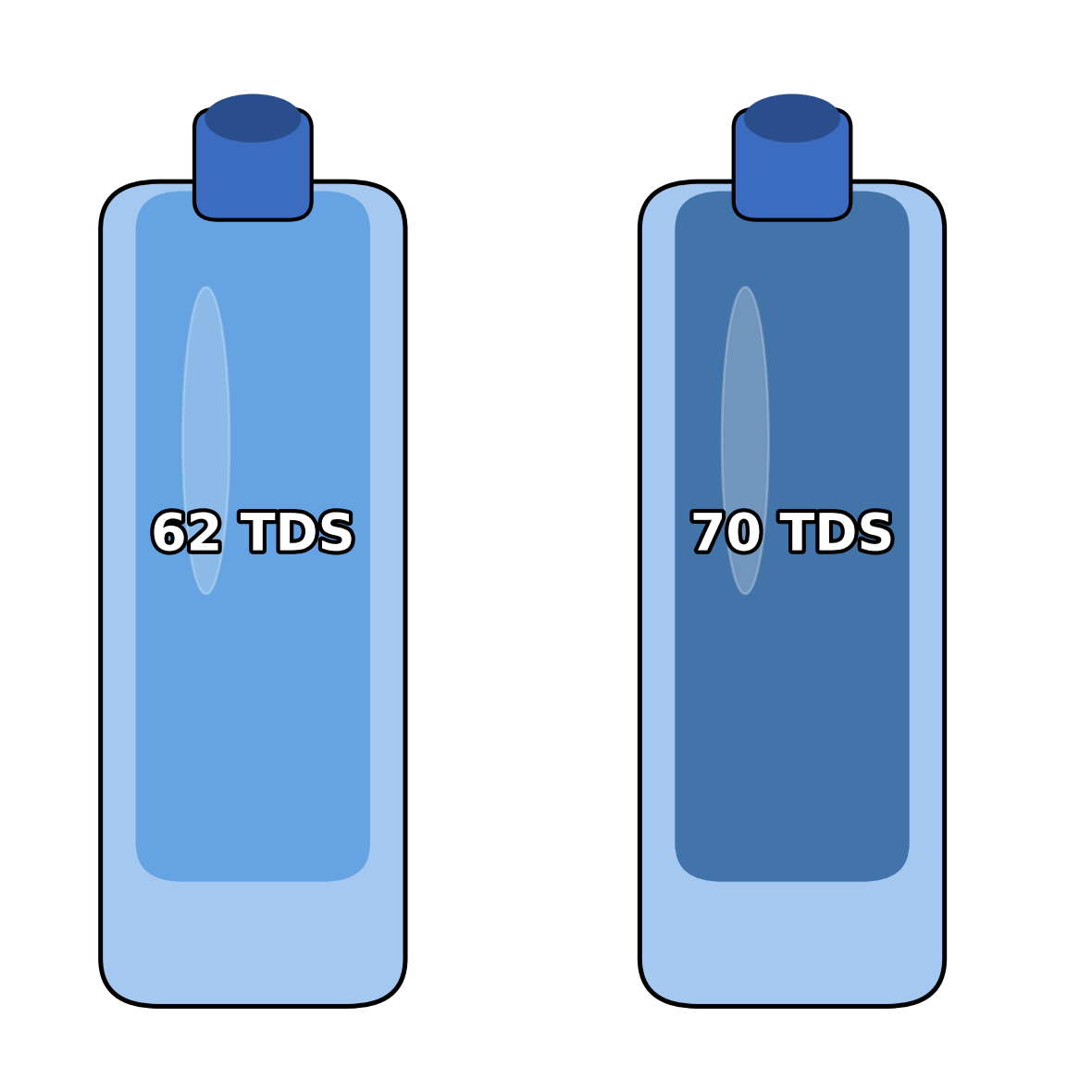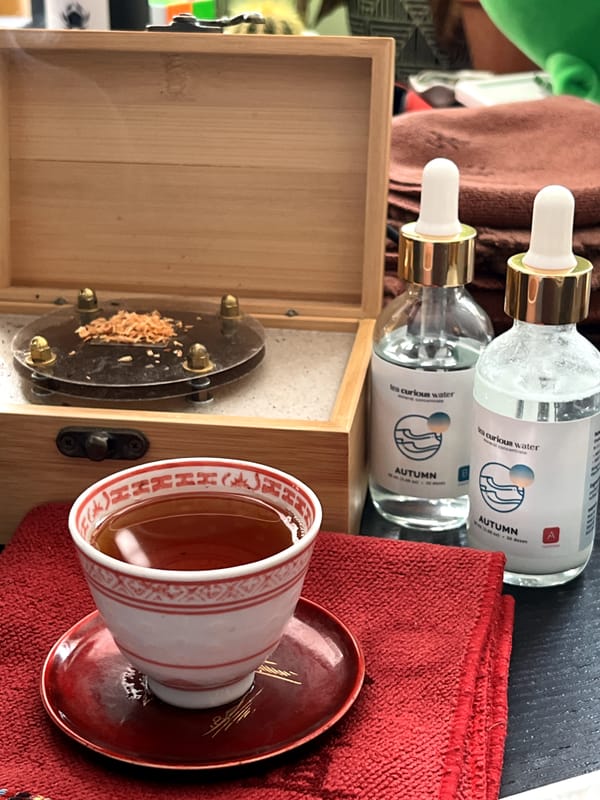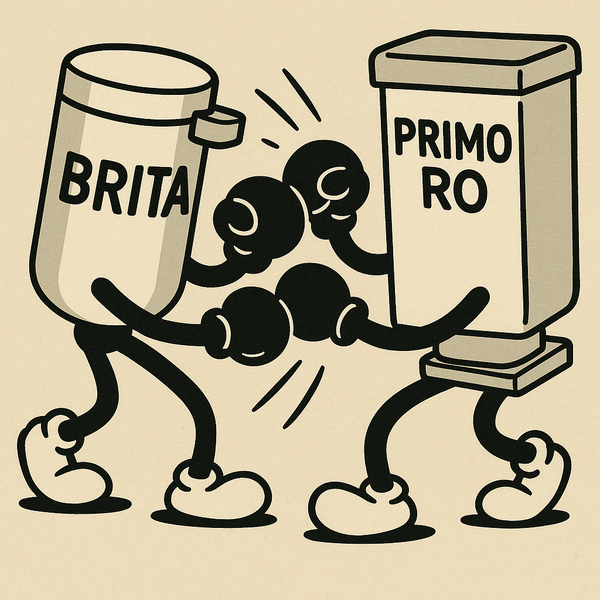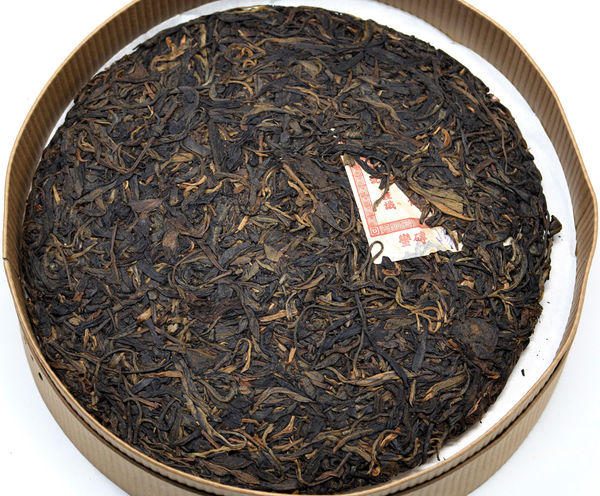The Kettle Stone Situation
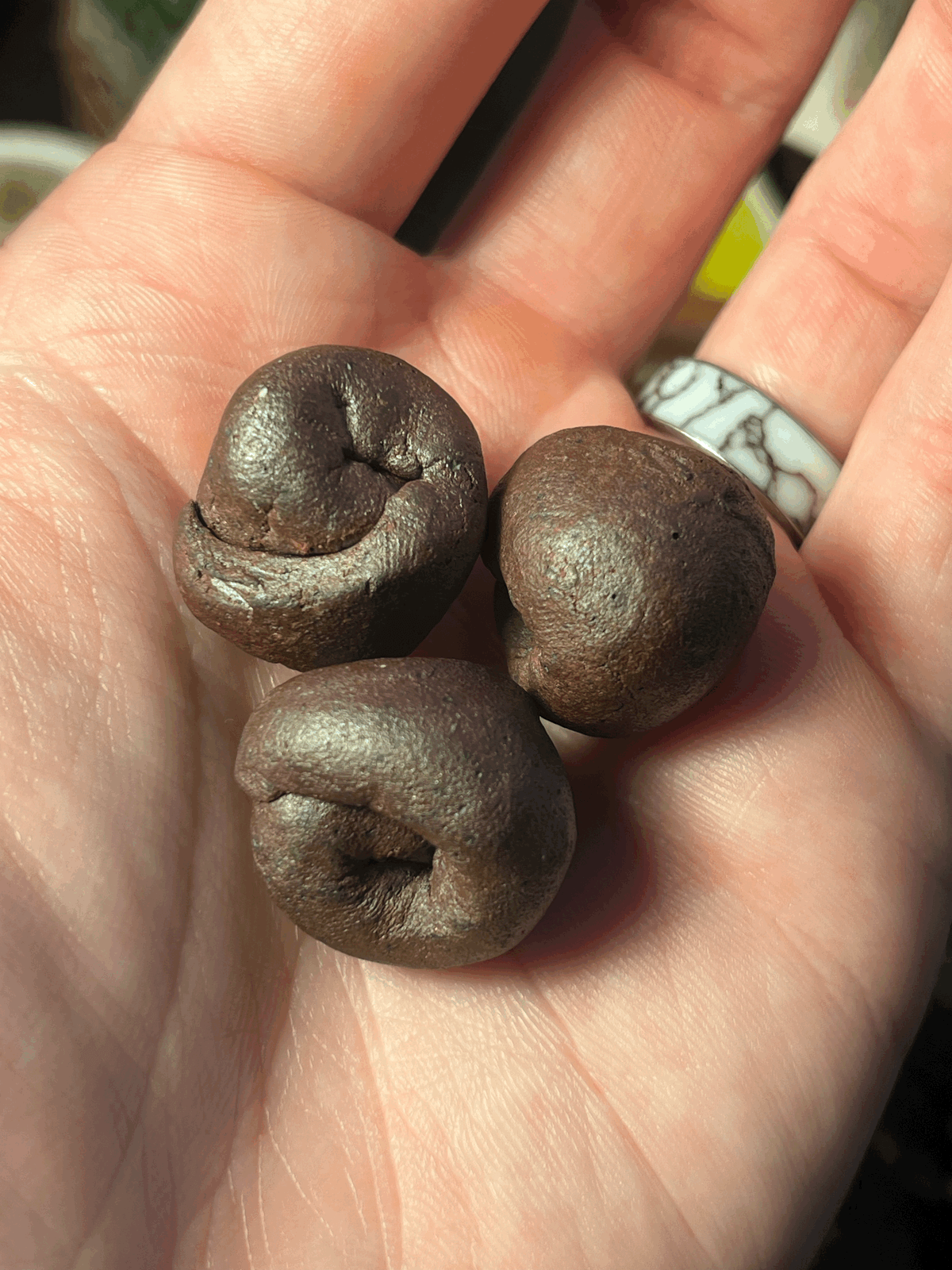
BIG DISCLAIMER:
I procured fresh, never used Lizella clay kettle stones from the most recent firing of a batch of Lizella teapots. These were as fresh as fresh comes, and were only used for about 2.5 days.
I am good friend's with Mark and he is a great person. I am not insulting him here in any way, and he also maintains a very research-minded approach to understanding why things are. We are jointly in pursuit of understanding, not condescension. I have no idea why this occurred and am not making any conclusions.
Alright, so - here's the scoop:
I was having just fine tea and enjoying sampling through some higher end trades that occurred recently (article on that below - coming soon). I was using Empirical Water, Glacial recipe at standard concentration as I had been for the last several months. Everything was fine, til it wasn't. This is the culmination of not quite 3 days from that point.
Retracing the steps:
A month or so ago - not long: I was in another season of very strong, clay teaware related research. I quickly, over the course of a week, realized I was not enjoying tea, but testing like a maniac; so I took a step back (article on that below as well - also coming soon).
I scaled down testing, started enjoying sampling, and then found myself drifting back into tests after just a few weeks. I can't seem to stop sometimes.
After ramping up more tests with various conditions, but keeping the water the same throughout - I ended up visiting Mark again and bringing home a studio pot of his, 3 years old, used monthly or more, mostly young sheng put through it. (yet again, another article about my experience w/ Mohler clay below - coming soon)
If you want to read any of these coming soon articles, subscribe to the free mailing list below!
Let's move the timeline up to about Sunday June 8th, 2025:
I probably tested out his pot (the one mentioned above) about 3 times before putting the small handful of 3 fresh kettle stones into my fellow Stagg stainless steel kettle (the same one he has actually, and many of us are familiar with it).
Here is a photo of what they looked like fresh before any use:
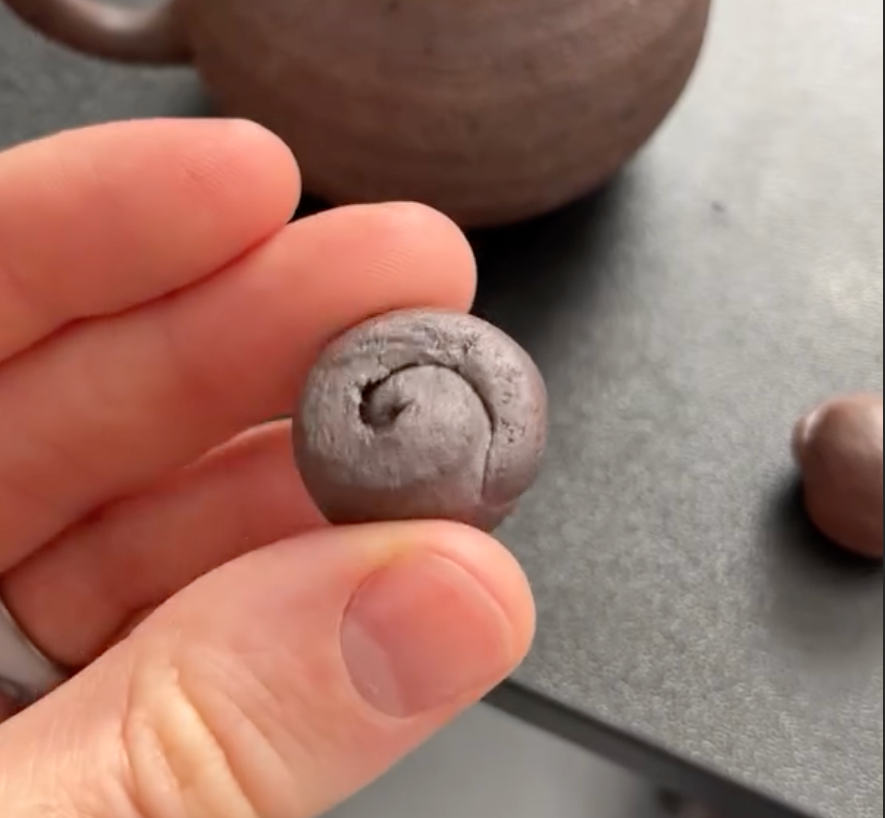
I believe I put them in mid-day after a session to experiment with on the 11th, today is the 13th - a bit past 48hrs later. Here is what they look like now, they were not taken out of the kettle at any point - as Mark does and I assume as most would as well.
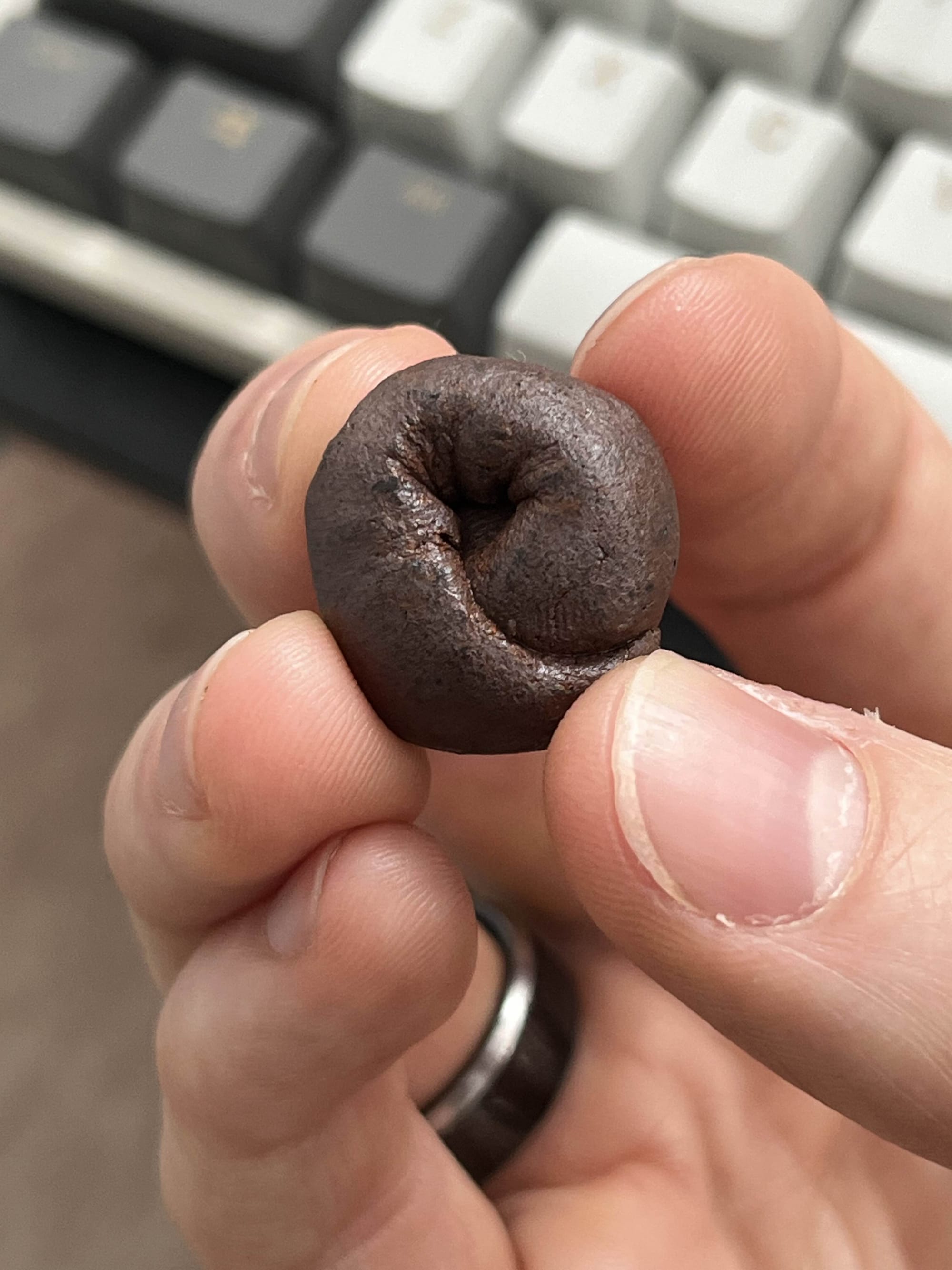
Notice the very edges have gained an obvious line of a brownish, iron rust looking substance. The same thing was on the top rim of the kettle lid where steam traps, and on the inner wall of the teacup in the form of a film before rubbing off and rinsing well (photos of both below).
At present: I have been experiencing fairly continuous agitation at the rear sides of the tongue. It feels like it's in pretty pinpoint spots sometimes, but then often it creeps up the whole of both sides of my tongue.
The agitation is bizarre, it is some sort of metallic-aluminum foil-soda can taste, sour/puckering sensation, and general tenderness creating this non-stop salivating from the affected areas...extremely odd. It is very uncomfortable.
Needless to say, this has been present in the tea the last two days or so since tossing these kettle stones in to see what the water effect would be.
Disclaimer:
There is technically a chance that it is something else entirely causing this. However, the context weighs against that possibility in my opinion...this was my train of thought the last couple days:
- It could be that I was eating / drinking off
- Yes but I've been doing nothing different really, I actually been cooking and eating at home much more often the last couple weeks and feeling much better for it. All the meals have been predictable things we would normally make.
- It could be that I was smoking cigars and pipe more, agitating the tongue pulling it back to the rear of the palate and retro-haling a bit for the first time
- Well then why didn't it affect me for days? It's also not a new variable, sure there's a smidge more frequency, but I smoke well and cool - and high quality leaf. I've gotten tongue bite far worse from smoke too hot but never this, and I've only gotten better at extracting gentle flavors from gentle smoke.
- Well, maybe there's like, a dental issue or something going on?
- Could be I guess idk, I'll go to the dentist soon anyway if it lingers I'll have him check thoroughly. I will ask him for sure just in case there's something he knows that I don't.
I think the unfortunate truth is, this sensation was instantly noticed the first steep of tea I drank from the kettle with those stones.
The Likely Reality:
We've all had experience with getting off tastes from teapots or changes in water, if you've been drinking tea for any length of time and tried anything new at least.
For some reason, and I don't know why - part of what I want to research more:
There is just a strong tendency for clay to interact with water.
Mark seems to think "you'd have to be a one in a million sensate" to detect noticeable differences in water or tea from being brewed in clay due to things like ion exchange. It's just too granular a level to notice.
While I'm not fully sure I agree, or honestly even understand - certainly don't understand as much about clay as he does by a country mile...one thing is for sure:
I can sure detect a feeling of wrapping my tongue in aluminum from these kettle stones...
What's even more bizarre about this to me is that I've drank tea with him in person twice now, and even in the studio pot twice also. We've used his exact same kettle as mine with stones in his as well - granted, wayyyy more 'seasoned'; they've been in his kettle a good long time.
No noticeable effect. He uses tap water and isn't fussy about anything and I've not detected anything like this in his conditions. Honestly, I brewed for him myself while he listed the most recent batch of pots. We had a lovely pomelo fragrance dancong in his clay and it worked, really did, I enjoyed it greatly.
Now, would that dancong do better in my more specific and 'refined' conditions? Maybe, yeah...but it was really quite nice, I genuinely enjoyed it, we both did. We also had a lovely day hanging out together and I again learned a lot about clay.
I'm not sure where to go from here.
Clearly the kettle stones (at least fully unseasoned and never before used) are dubious for my conditions and my water. I only hope my tongue goes back to normal soon.
I tried cleaning my kettle about 3 times and may have to do one more just to be sure. I boiled some vinegar and water, baking soda and water, and scrubbed it out with a sponge laden in lemon juice - testing it between each time to no positive result. It even got these brownish looking rust-like deposits on the top inside rim where steam gets trapped in just 2 days.
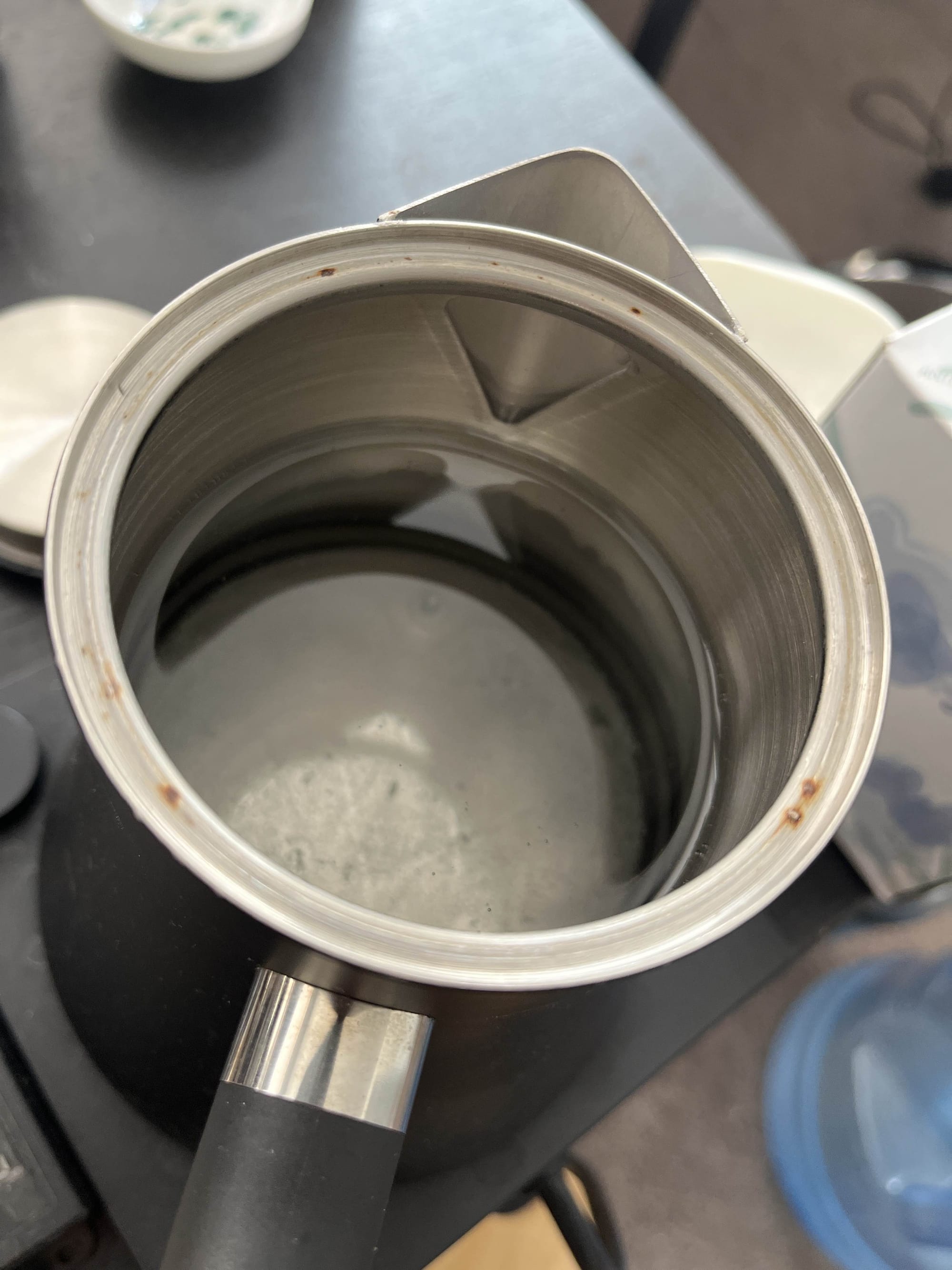
As did my cup, collecting a noticeably different coating than the typical left behind tea stain (I know cause normal water in it with that film present gave the same taste - it rubbed right off with hot water though).
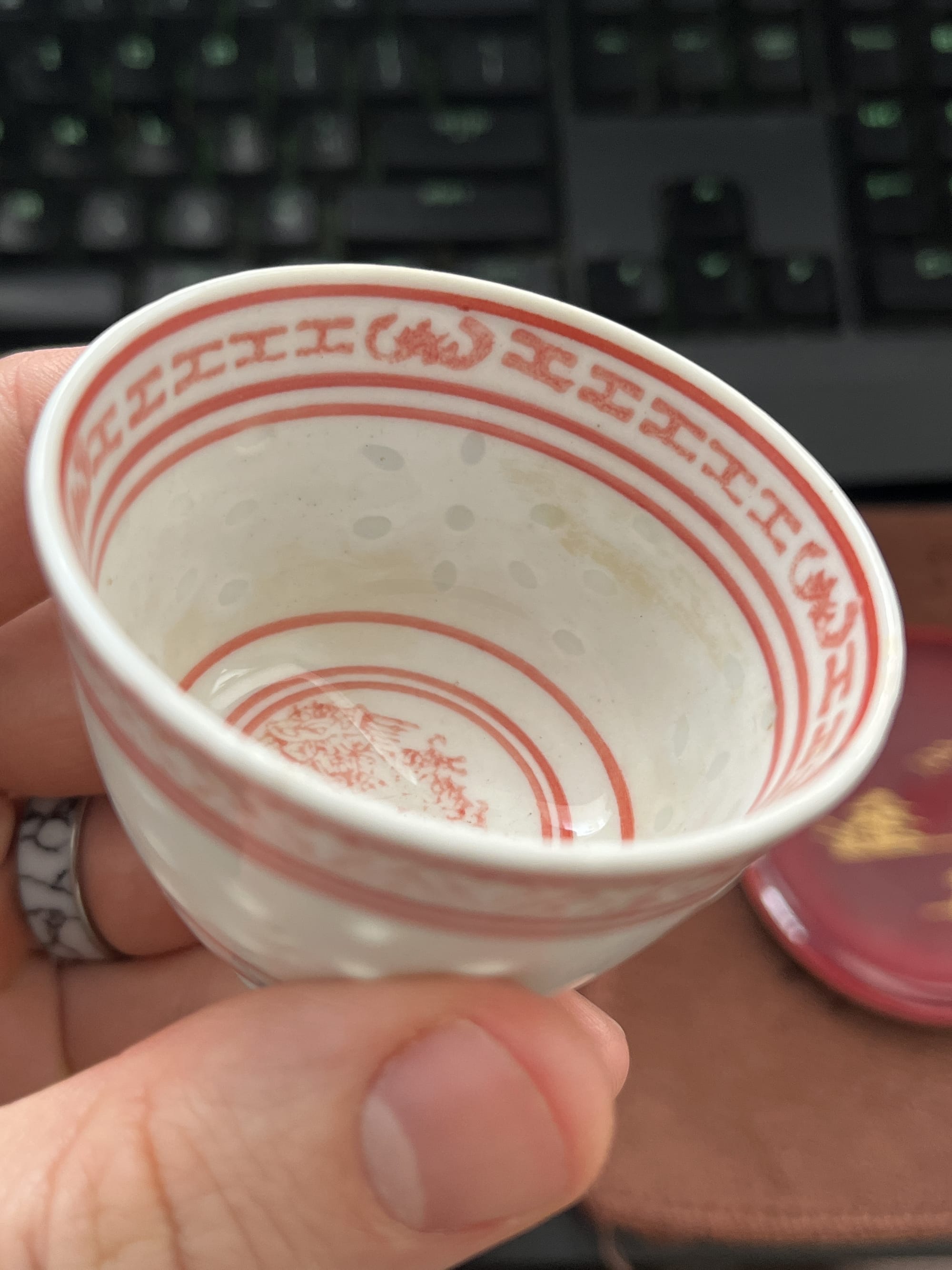
Current Speculations:
At this point, I'm not sure to be honest. I'll continue testing...just, maybe at a slower pace 😄 I'd like to intersperse a lot more learning and growing days of enjoying good tea in known parameters than overweighting my week with unknowns and new variables. (and again - article coming soon on the idea of testing vs. enjoying tea)
I do think I have a few very solid takeaways, at least for now:
- I don't think my tongue appreciates whatever aluminum thing is going on with Lizella clay when it is involved in the process of boiling water while new and unseasoned. It is far more aggressive and unpleasant than the typical clay taste you tend to get with a fresh pot before it's broken in a bit. My gut says I probably wouldn't even when seasoned, though I'd assume it would be far less, but I can't be sure.
- Clay interacting with water is FAR more potent and FAR more noticeable when we're talking boiling in it / with it, just generally - Mark agrees with this 100%.
- I suspect Lizella has a long break in time, and even longer seasoning time. Mark confirmed.
- Plug for Seo on this one: Glazed. Glazed. Glazed. ALWAYS run tests involving new water or things like that in glazed BEFORE granting them permission straight into your treasured 60's hongni teapot. It won't kill it, but it'll be a pain and a mild scare if it throws a valued pot off or you have to, even gently, undo some damage to the seasoning you've worked to build with a light reset.
EDIT: Circling Back ~One Week Later
It's been slightly past a week by a day or two now; I have a few short things to add:
- My tongue is all better, I continued smoking pipe occasionally while healing during the second half of the week to no agitation. Tea still gave agitation until yesterday, something with the acidic nature I presume. Sparkling water surprisingly gave agitation as well, again, probably the pH being lower.
- I have not revisited the stones but have blind tests planned with Mark. I have not used his studio pot further yet but it did not present any issues like the stones did.
- I wanted to ensure it was clarified that after talking with Mark, the kettle stones in his kettle we drank with were also from the fresh recent batch. While that does potentially complicate things, after some long discussions with AI, I have come up with an alternative hypothesis that may be worth contemplation:
- Mark, like Andrew, brews with simple unfiltered tap water from his home. The likely reality is that the water was harder to begin with than a roughly 70 TDS Empirical Water brew.
- Before we get carried away, let's recall these were the equivalent of a new clay pot never being broken in or opened up with boiling water or rinses of any kind, just dropped right in mid session, so I don't know what I expected to have happen...However, what this could mean is this:
- Same stones, heavy tap = less 'room' (sort of akin to a solution) to leech
- Same stones, semi-softer recipe water = more 'room', possibly more reactive potential with that mineral makeup, more leech
Again, no idea on all this, no conclusive evidence or accusations. Just a strange week and a happy Snoot to be back to drinking some good tea 😄
EDIT: Circling Back ~Another Week Later
Having a session of Wistaria Qing Teng today and getting a faint trace of that metal in the same spots in the rear of the palate on either side. Not so much that it makes me want to dump the session but enough that it's noticeable and unfortunate. About a 3/10 presence.
The kettle did show a strange and unfamiliar brownish tinted 'tarnish' look on the inside at the mid point on the stainless steel wall. Same kettle as above and as used all the time. It didn't look like rust, more like something I could have almost wiped off. I'm not sure if my fingers would have gotten it off or if it would have required a little more, it looked 'part of the metal' to a degree. I've never seen this before and never had these issues.
The strange part about this is that just yesterday I had Mopar's '98 8582 with the same kettle, same water, same pot, same cup, and in the same seat that I pretty much always drink from and am using as my default setup for when I don't want variables and/or just know for sure I want to enjoy a tea fully. Of course if it's a known trad production I won't put it in the 60's hongni, though once and a while I might...I tend to use the Blapple for such applications. This was not one of those times and the 8582 tasted...admittedly a bit off, but good and enjoyable. I wouldn't say I detected the taste or sensation I've been referencing.
Maybe it was the type of tea? Could it be that Qing Teng picks up more of the leftover metal trace and has its taste skewed more by it than the older, wetter material? Could it be that its acidity is high enough that I am still a bit sensitive to it but not to others?
Interestingly, I just had - again, in the same kettle - a couple other teas this week with some softer waters I was testing (Icelandic Glacial and Saratoga). While I hated that experience 😆, I did not get any metal taste / tongue sensitivity with those tests. You can read that here:
